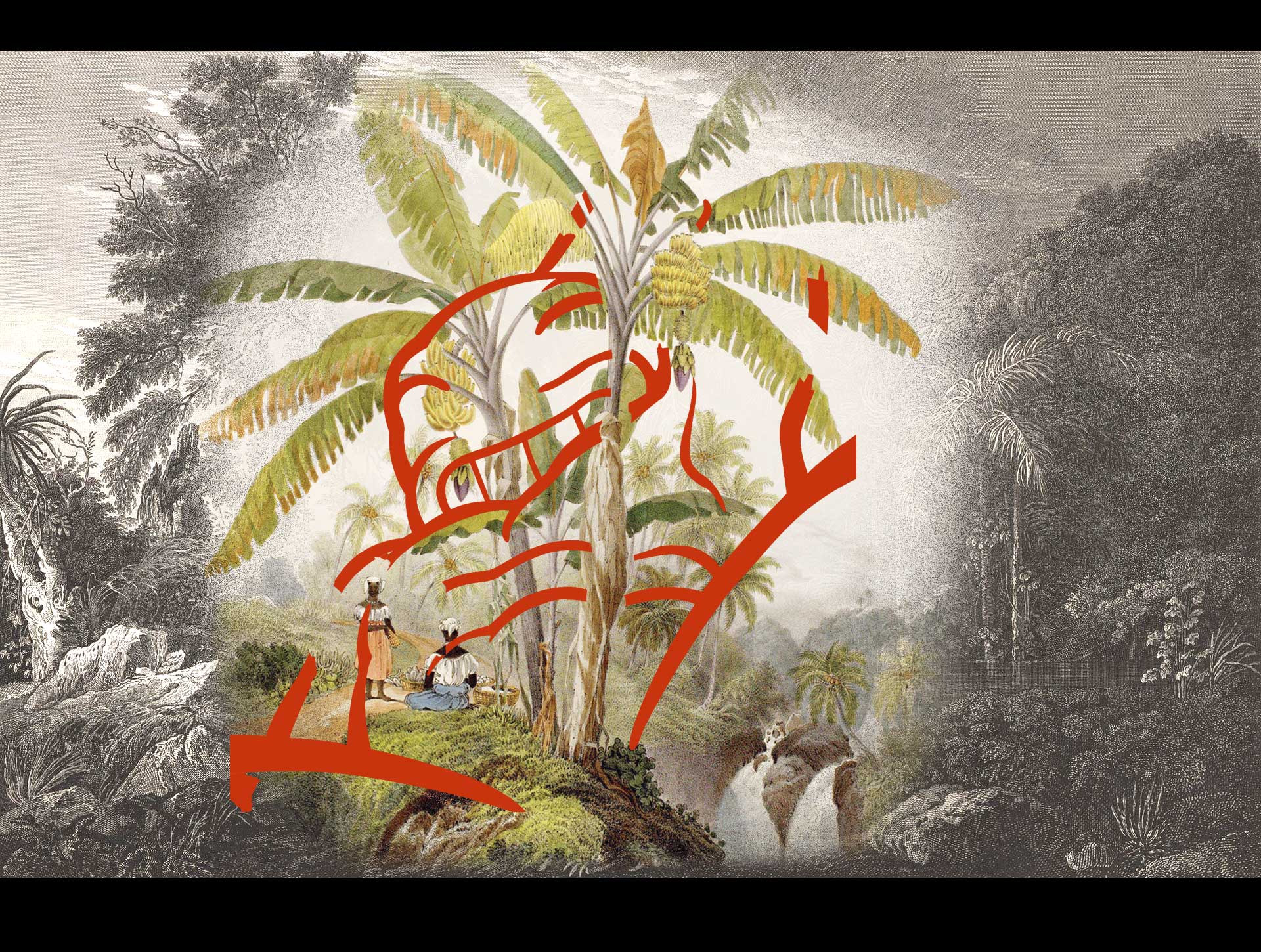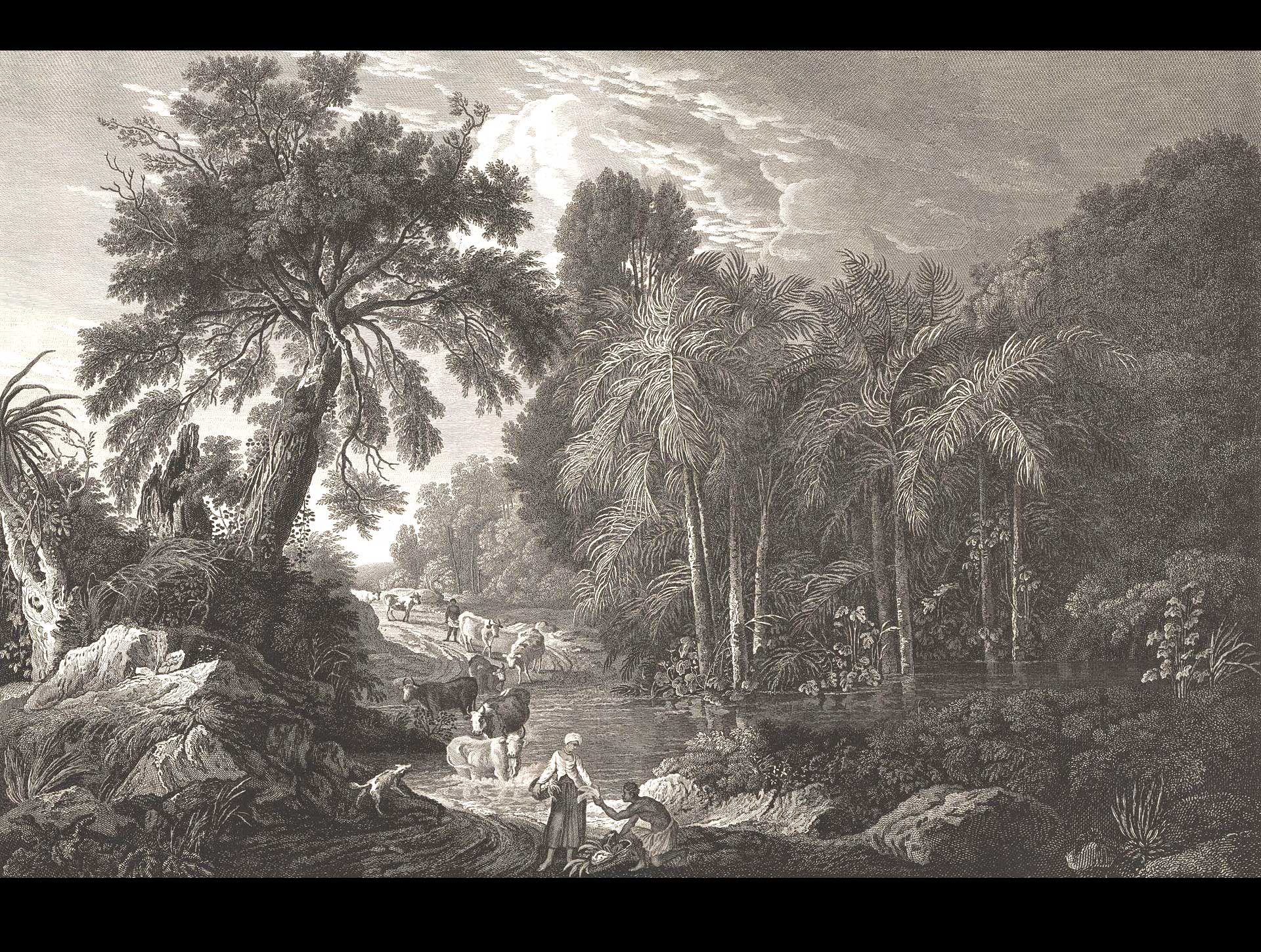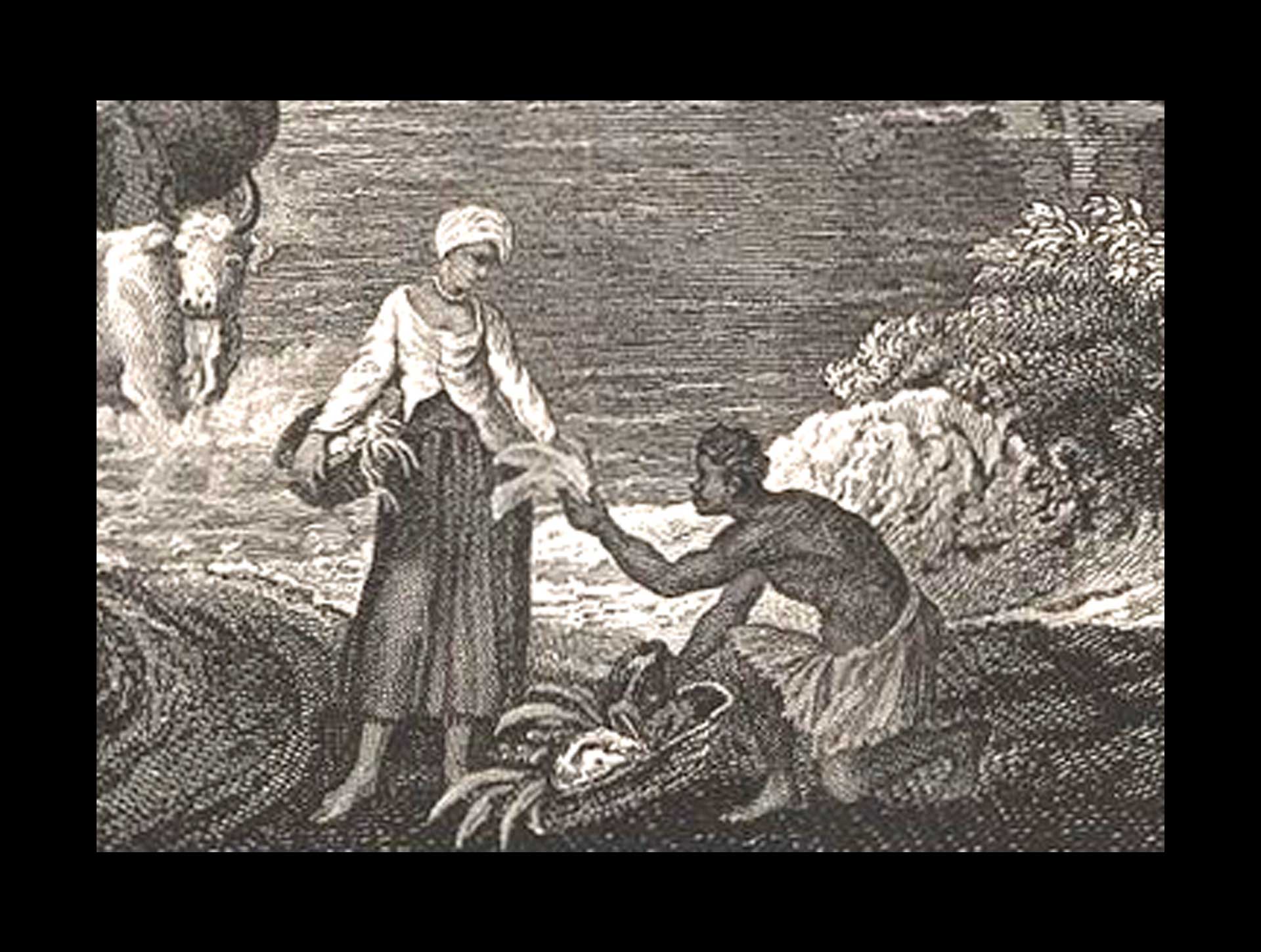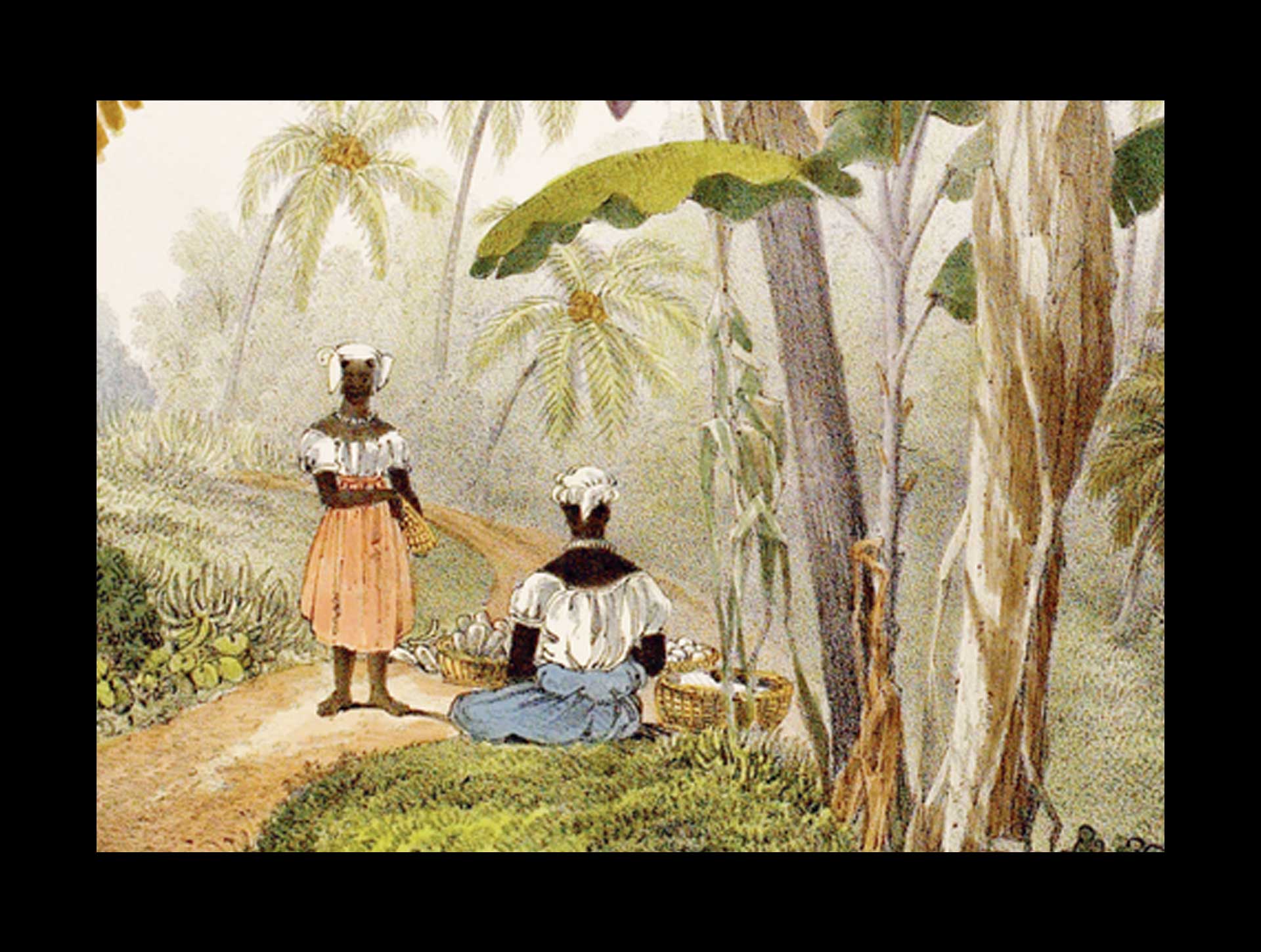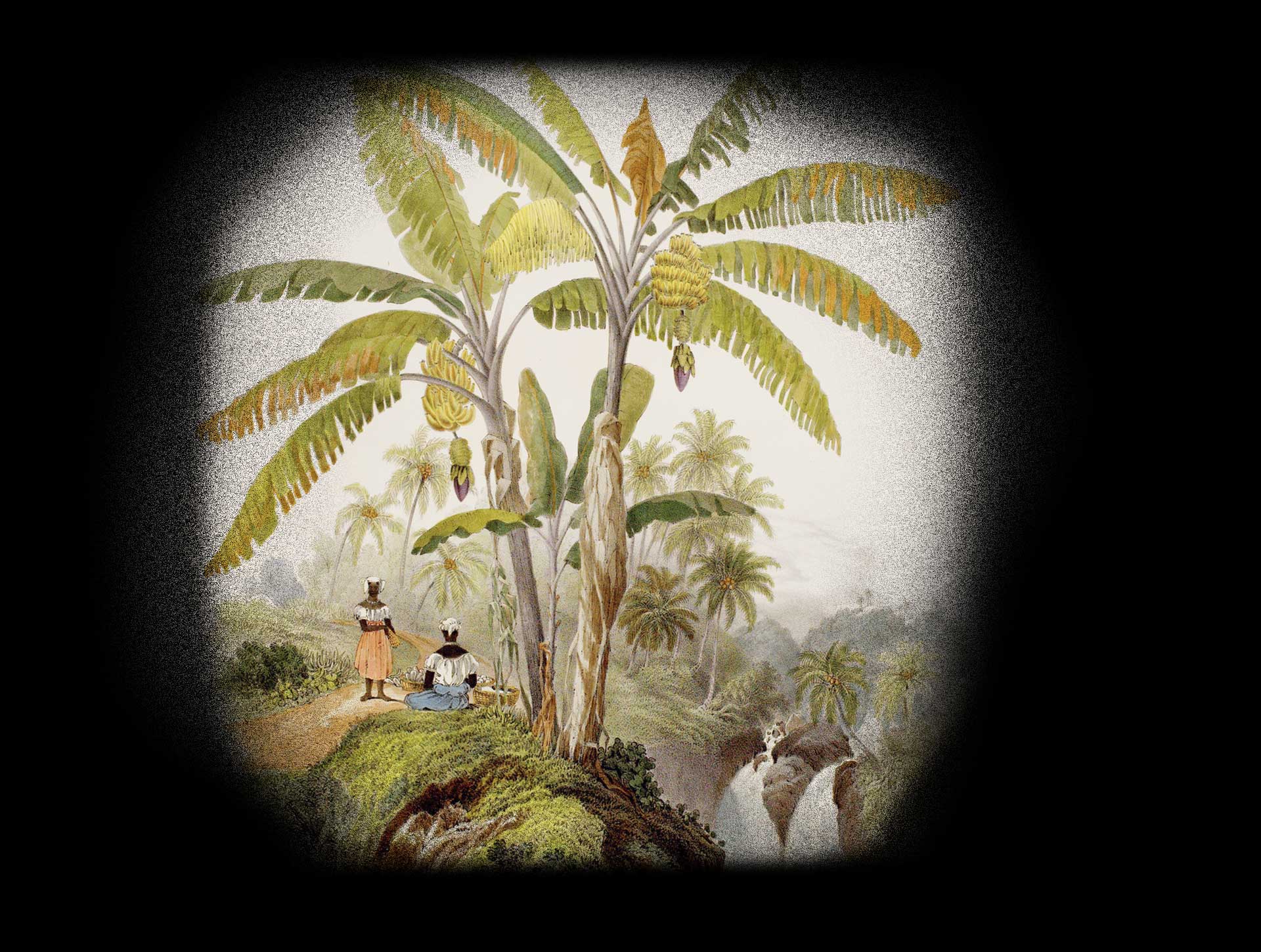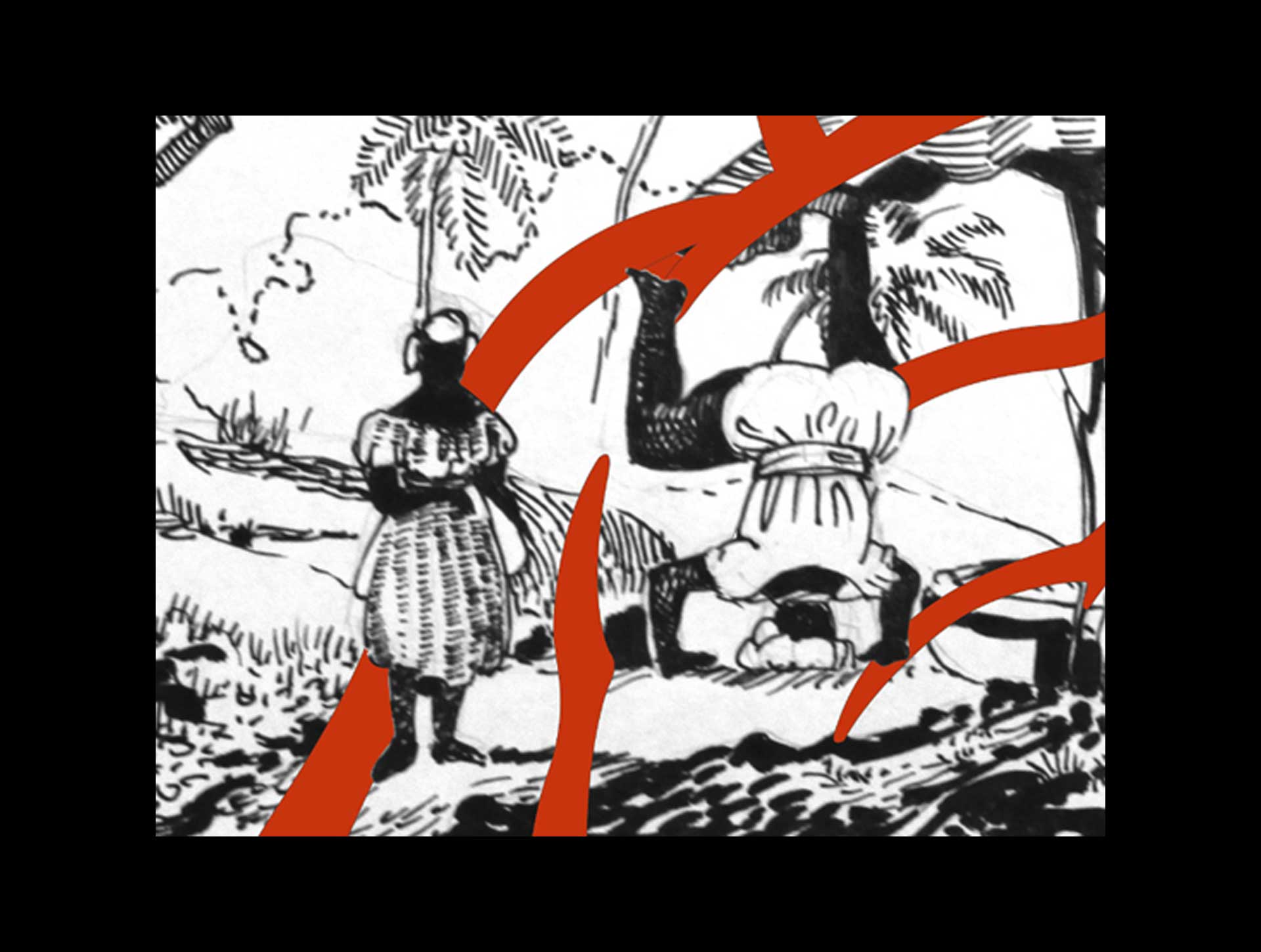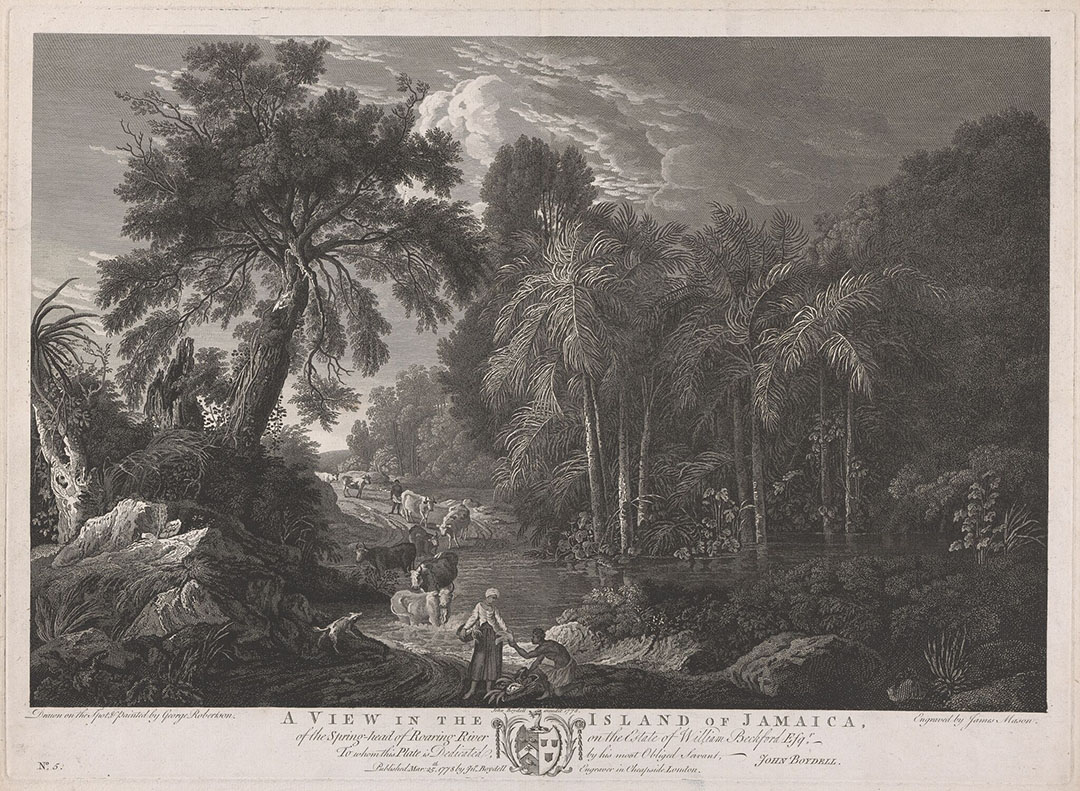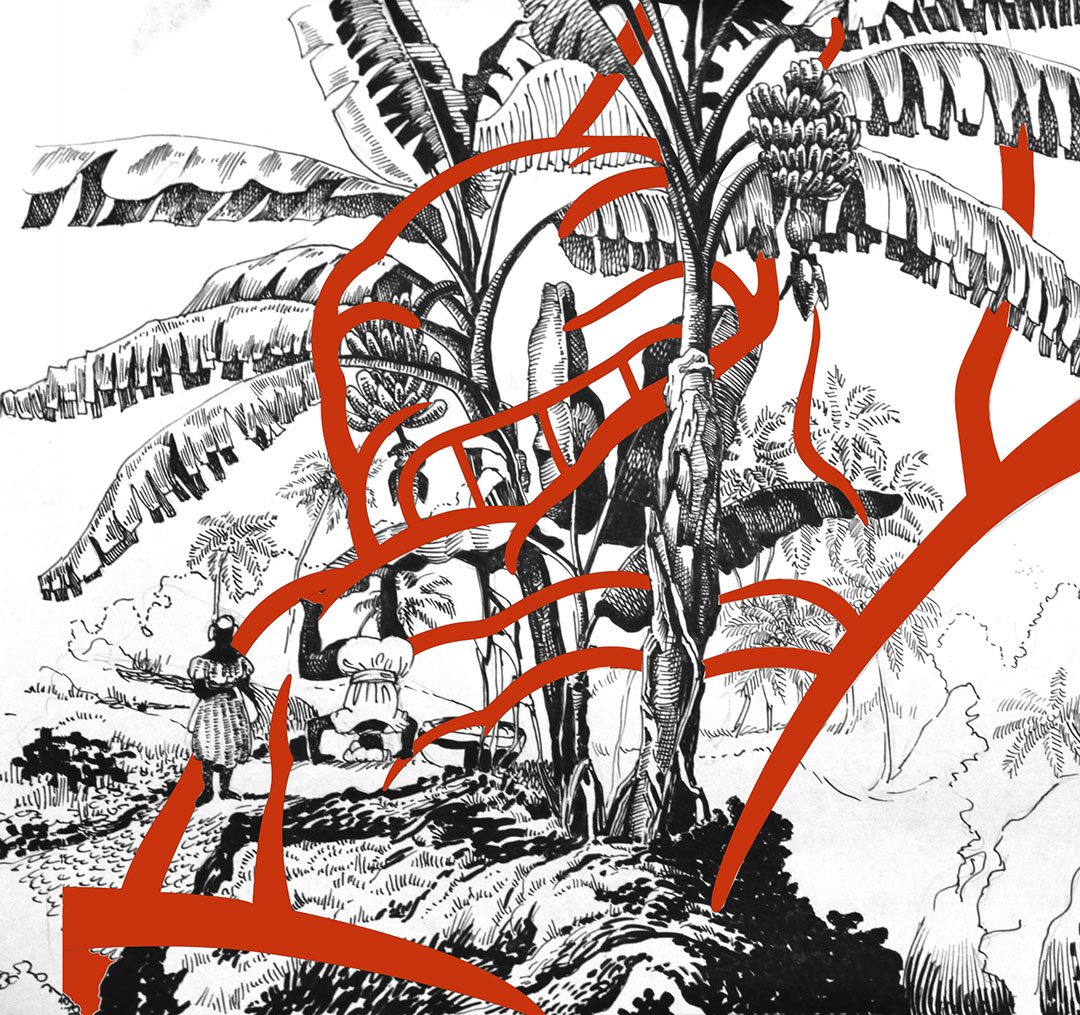PALIMPSESTS
Spaces
Referenced works
James Mason, after George Robertson: The Spring Head of Roaring River (1778).
Line engraving. Yale Center for British Art, Paul Mellon Collection
Thompson, Krista A., An Eye for the Tropics: Tourism, Photography, and Framing the Caribbean Picturesque. Durham: Duke University Press, 2006.
Vermeulen, Heather V. and Hazel V. Carby, Prospects of Empire: Slavery and Ecology in Eighteenth-Century Atlantic Britain, Exhibition catalogue (2nd ed.) for “Prospects of Empire: Slavery and Ecology in Eighteenth-Century Atlantic Britain,” Nov. 17, 2014—May 1, 2015, Yale University Lewis Walpole Library)


